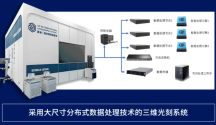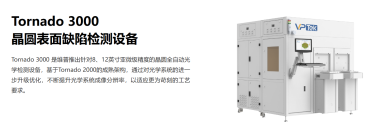Shanghai Silicon: 300mm silicon wafer capacity utilization rate is relatively high
Shanghai Silicon Industry Group Co., Ltd. (688126.SH) released its Q3 2025 financial report, showing revenue of RMB 2.641 billion for the first three quarters (up 6.56% year-on-year) and a net loss of RMB 631 million; Q3 revenue was RMB 944 million (up 3.79% year-on-year) and a net loss of RMB 265 million. The main reasons for the losses include: sales of 300mm silicon wafers increased by over 30% but unit prices were under pressure; sales of 200mm silicon wafers decreased by about 10% and contract processing revenue dropped significantly; coupled with increased R&D investment (RMB 253 million in the first three quarters, up 21.63% year-on-year) and financial expenses from capacity expansion.On November 3rd, the company mentioned in an investor relations activity that the capacity utilization rate of 200mm silicon wafers has been slowly recovering due to sluggish application demand; the capacity utilization rate of 300mm silicon wafers is relatively high and sales are increasing, but prices are still under pressure due to domestic competition. Looking at the overall market, polished wafers for memory currently account for about 60-65% of the market, logic wafers about 30%, and the remainder are heavily doped power products. The company's market share is roughly the same.
Construction of Shanghai Silicon Production Line:
The Taiyuan project for upgrading the production capacity of 300mm silicon wafers for integrated circuits continues construction. The company's combined production capacity of 300mm semiconductor silicon wafers in Shanghai and Taiyuan has reached 750,000 wafers/month. The combined production capacity of polished wafers and epitaxial wafers of 200mm and below from subsidiaries Xin'ao Technology and Okmetic exceeds 500,000 wafers/month. The combined production capacity of SOI silicon wafers of 200mm and below from subsidiaries Xin'ao Technology and Okmetic exceeds 65,000 wafers/month. The current production capacity of 300mm SOI silicon wafers from subsidiary Xin'ao Core is approximately 80,000 wafers/year, and it is expected to continue to increase the production capacity to 160,000 wafers/year this year. Subsidiary Jinke Silicon Materials has successively obtained system certifications from multiple customers. The Taiyuan factory continues to promote the certification of 300mm products and has now completed the quality system audits of multiple customers, gradually starting to realize the mass sales of positive wafers.
Construction of Shanghai Silicon Production Line:
The Taiyuan project for upgrading the production capacity of 300mm silicon wafers for integrated circuits continues construction. The company's combined production capacity of 300mm semiconductor silicon wafers in Shanghai and Taiyuan has reached 750,000 wafers/month. The combined production capacity of polished wafers and epitaxial wafers of 200mm and below from subsidiaries Xin'ao Technology and Okmetic exceeds 500,000 wafers/month. The combined production capacity of SOI silicon wafers of 200mm and below from subsidiaries Xin'ao Technology and Okmetic exceeds 65,000 wafers/month. The current production capacity of 300mm SOI silicon wafers from subsidiary Xin'ao Core is approximately 80,000 wafers/year, and it is expected to continue to increase the production capacity to 160,000 wafers/year this year. Subsidiary Jinke Silicon Materials has successively obtained system certifications from multiple customers. The Taiyuan factory continues to promote the certification of 300mm products and has now completed the quality system audits of multiple customers, gradually starting to realize the mass sales of positive wafers.
Last edited:






